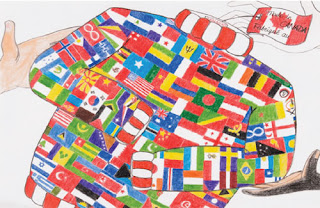Throughout this course, a main focus has been the status of multiculturalism in Canada. While multiculturalism is often viewed positively by Canadians, closer inspection shows that Canada is not nearly as accepting of diversity as it appears. Wendy Brown’s (2006) analysis of the effects of tolerance discourse supports this less-than-ideal reality. Beginning with the actual pejorative connotations of the word, tolerance discourse has actually contributed to the inequality of the distribution of power in Canadian society.
To introduce the idea of tolerance, Brown (2006) uses the Oxford English Dictionary definition. Rooted in the Latin tolerare, tolerance means to “endure”, to “license” and to “indulge” a burden (Brown, 2006, p.25-26). This definition implies that “tolerance entails suffering something one would rather not, but being positioned socially such that one can determine whether and how to suffer it, what one will allow from it,” (Brown, 2006, p.26). With a definition such as this, it is interesting to see the effects that messages of tolerance have on the overall application of multiculturalism in Canada.





